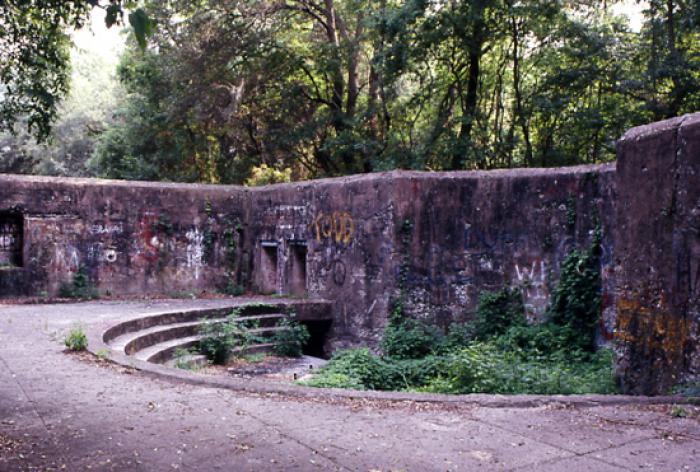Fort Fremont Battery
National Register Listing
Street Address:
off Lands End Rd., St. Helena Island, SC (Beaufort County)
NRHP Nomination
NRHP Boundary Increase and Additional Documentation
Record Number:
S10817707067
Description and Narrative:
Fort Fremont Battery is significant as an intact example of late nineteenth and early twentieth century military architecture. It is also significant as the major armament at one of two surviving coastal fortifications in the U.S. intact from the Spanish-American War era. Fort Fremont was one of the fortifications built under the direction of the Endicott Board, a body created in 1886 to evaluate the coastal defenses of the U.S. and named for its head, Secretary of War William C. Endicott. Fort Fremont was authorized soon after the Spanish-American War began in April 1898. It was named for Major General John C. Fremont, explorer, first presidential candidate of the Republican Party in 1856, and Civil War general. Its location was chosen to protect Beaufort from possible enemy incursions into Port Royal Sound. Although the war ended in the fall of 1898 and the Sound was never threatened, construction continued as planned. The complex was built by the Corps of Engineers with hired labor from the Beaufort area and was completed by 1900, when it was turned over to the Coast Artillery. The War Department planned to phase out the post at Fort Fremont as early as 1906, but a garrison normally numbering some one hundred officers and men was stationed there, usually conducting artillery practice and maintaining the fort and its guns, until 1911. The fort was then decommissioned and the property was sold at public auction by the War Department in June 1930. Fort Fremont consists of Batteries Jesup and Battery Fornance, the latter of which was determined to lack integrity at the time of the original nomination. A private residence located on Battery Fornance was later removed, and the nomination boundary was expanded to account for the battery’s restored integrity. Additional documentation submitted at the same time also documented a tabby ruin recently discovered within the original boundary. Listed in the National Register May 5, 2010. Boundary increase and additional documentation May 6, 2021.
Period of Significance:
1898 – 1911
Level of Significance:
National
Area of Significance:
Military;Architecture
National Register Determination:
listed
Date of Certification:
May 5 2010
Date of Boundary Increase:
May 6 2021
